




With its unique intimate design, substantial floor capacity, modern backstage facilities and planet-first approach, the UK’s largest arena is gearing up to change the face of live entertainment.
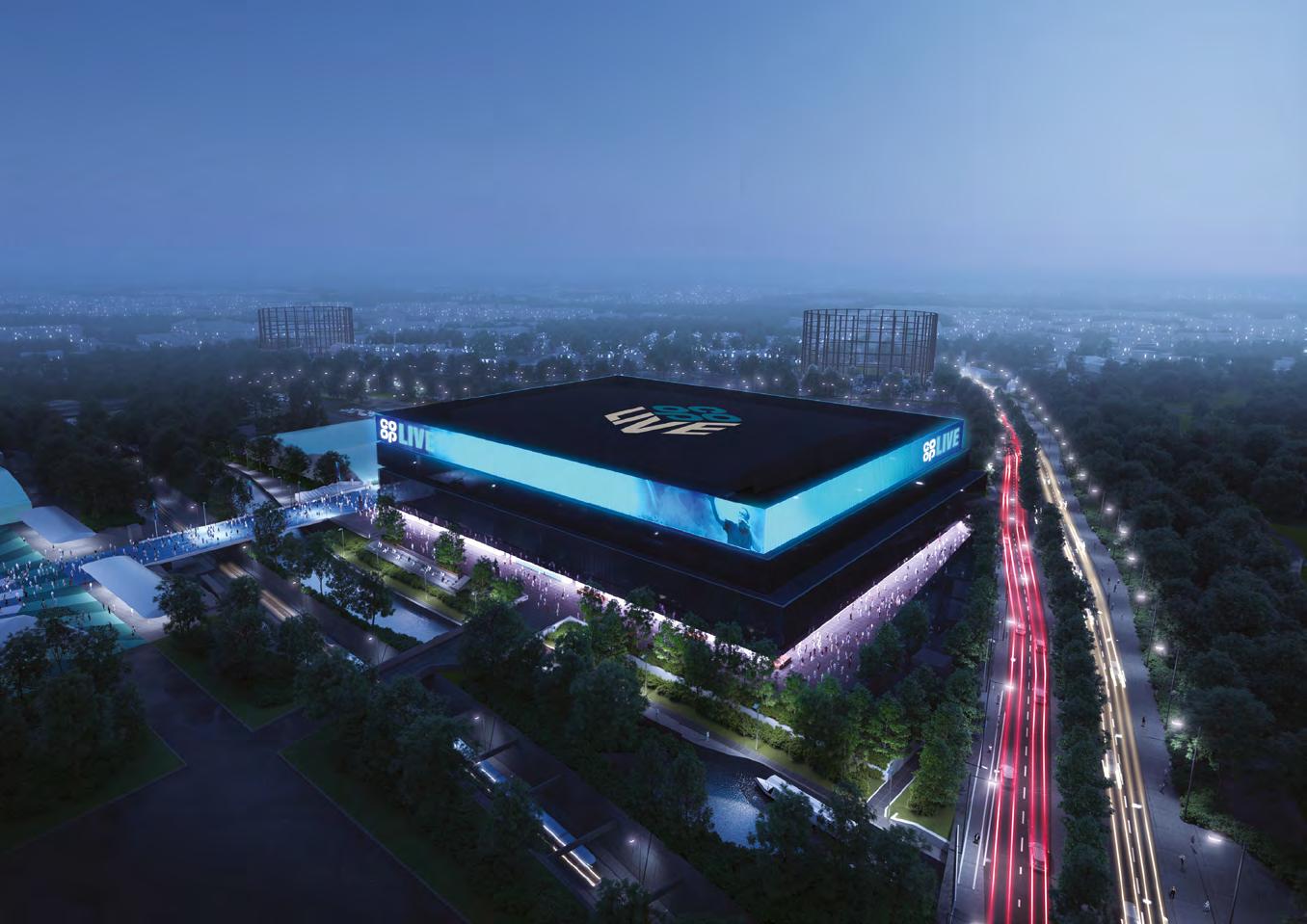
Co-op Live has been designed to significantly enhance the artist and fan experience, specially built to bring the performers up to 23 metres closer to the audience. The branding-free black bowl design ensures zero distraction from the stage with a discreet suite level, while the low ceiling and 7,500 capacity floor promises an atmosphere like no other.
Boasting 330 tonnes of rigging capacity, a 25-metre ceiling height and 8 loading bays, the venue is well-equipped to host major productions across music, sport, comedy and family events. The bowl includes world class acoustic treatment and performance standard audio systems, ready to showcase artists at their best.
Co-op Live will be the UK’s first all-electric venue, helping to make touring more eco-friendly with ingrained smart environment technology, solar panels and rainwater harvesting. From Manchester’s city centre, fans can reach Co-op Live in 20 minutes via our interactive, safe, and sustainably designed walking route, or a 10-minute tram ride. Co-op Live also pledges over £1m annually to local and national good causes via the Co-op Foundation.
Co-op Live is part of Oak View Group (OVG) and is the groups first European venture. We are creating a worldwide network of iconic venues, including Climate Pledge Arena (Seattle), UBS Arena (New York), Moody Centre (Austin), Acrisure Arena (Palm Springs) and the recently opened CFG Bank Arena (Baltimore). As well as expanding the international footprint with projects in Cardiff and São Paulo.
For booking enquiries contact Katie Musham at kmusham@cooplive.com
WWW.COOPLIVE.COM

elcome to the Global Arena Guide 2023 – the definitive reference tool for anyone working at arena level on the international touring circuit. Featuring in-depth portraits of almost 70 markets around the world, plus a directory of almost 600 arenas, this is an indispensable guide that I hope you’ll come back to time after time.

With the spectre of Covid-19 now firmly in the rear-view mirror, arenas across the globe are busier than ever. And what’s filling many of these venues is a massive expansion of entertainment. From the worldwide march of Latin, K-pop, and J-pop artists to immersive exhibitions and the rapid growth of ‘family entertainment,’ this feels like a peak moment for creativity. And fans are welcoming the new content with open arms (and ears).
Also demonstrating the creativity and problem-solving talent of everyone working in these venues is the huge planet-wide efforts to tackle the challenge of environmental sustainability. As we profile on P14-17, there’s an inspiring number of initiatives underway to not only ensure that venues have minimal impact on our environment but that tours and more are handled in a way that means we may just leave Earth in a fit state for future generations.
Many of these sustainability efforts are being built into the brand-new venues currently under development. It feels like there’s never been a busier time for new arenas, with huge numbers coming on stream in the next five years. We take a look at some of the key plans on P6–13.
Being able to share such a deep and worldwide look at the arena market is a privilege, and I want to say a massive thank-you to everyone who contributed to making the Global Arena Guide 2023 such a success, from everyone who shared their knowledge with our writers to all the companies and associations who generously supported the publication.
I hope you find this publication a useful reference. Please don’t hesitate to contact me if you have any feedback. I can’t wait to see what the next 12 months have in store for this dynamic and inspiring part of the live entertainment business.
James Drury | EditorThe EAA continues to develop initiatives focused on knowledge sharing, ideas exchange, and networking across its membership platform, in addition to strengthening relations with EU governing bodies through activities that are aligned with current EU policies, such as skills development and targeted training; societal health and well-being; and sustainability.


One of our main priorities is the development of industry talent, and earlier this year, we launched a talent exchange programme between our members designed to give staff opportunities to learn new skills, expand their experiences, and grow their connections. Our members, spanning 20 countries, face similar issues but often deal with them in different ways, and our ability to share and learn from each other is one of the association’s core strengths. This exchange initiative also expands our outreach to a greater number of our members’ teams from multiple functions and levels across the network.
In April, we launched a set of guidelines in partnership with A Greener Future (formerly A Greener Festival), which are intended to support arenas with the green transition, highlighting fundamental steps that venues from all countries need to take. Developed from the latest research and best practices in sustainable venue management, the guidelines have been designed to act as a set of recommended practices to help our members in their decision-making, planning, and implementation and they are also available to any arena wishing to adopt greener business practices.
2023 is proving to be a busy year for the industry, with increases in the number of events and demand for tickets. However, we are still facing fallout from the pandemic, particularly from the loss of experienced staff, especially from production, technical, and administrative functions, who left the industry due to the venue closures. We are also starting to see the effects of inflationary pressures as customers become more discerning about what they purchase and more demanding in terms of value expectation. Customers are becoming very vocal about their expectations and demands and, in certain regions, some of our members have reported aggressive behaviour when customers feel their needs are not being met.
In this scenario, it is clear we must continue our efforts on working together to share industry intelligence and develop new ideas and technological innovations, not only to respond to but also to anticipate ever-changing market needs. Also key to this will be the existence of a fully engaged, well-trained, and resilient workforce that can meet and exceed the growing demand for an elevated, value-driven live event experience.
Olivier Toth | President, European Arenas Association (EAA)
The rate at which plans for new arenas are being announced shows no sign of slowing down. Here are some of the exciting new venues in the pipeline.
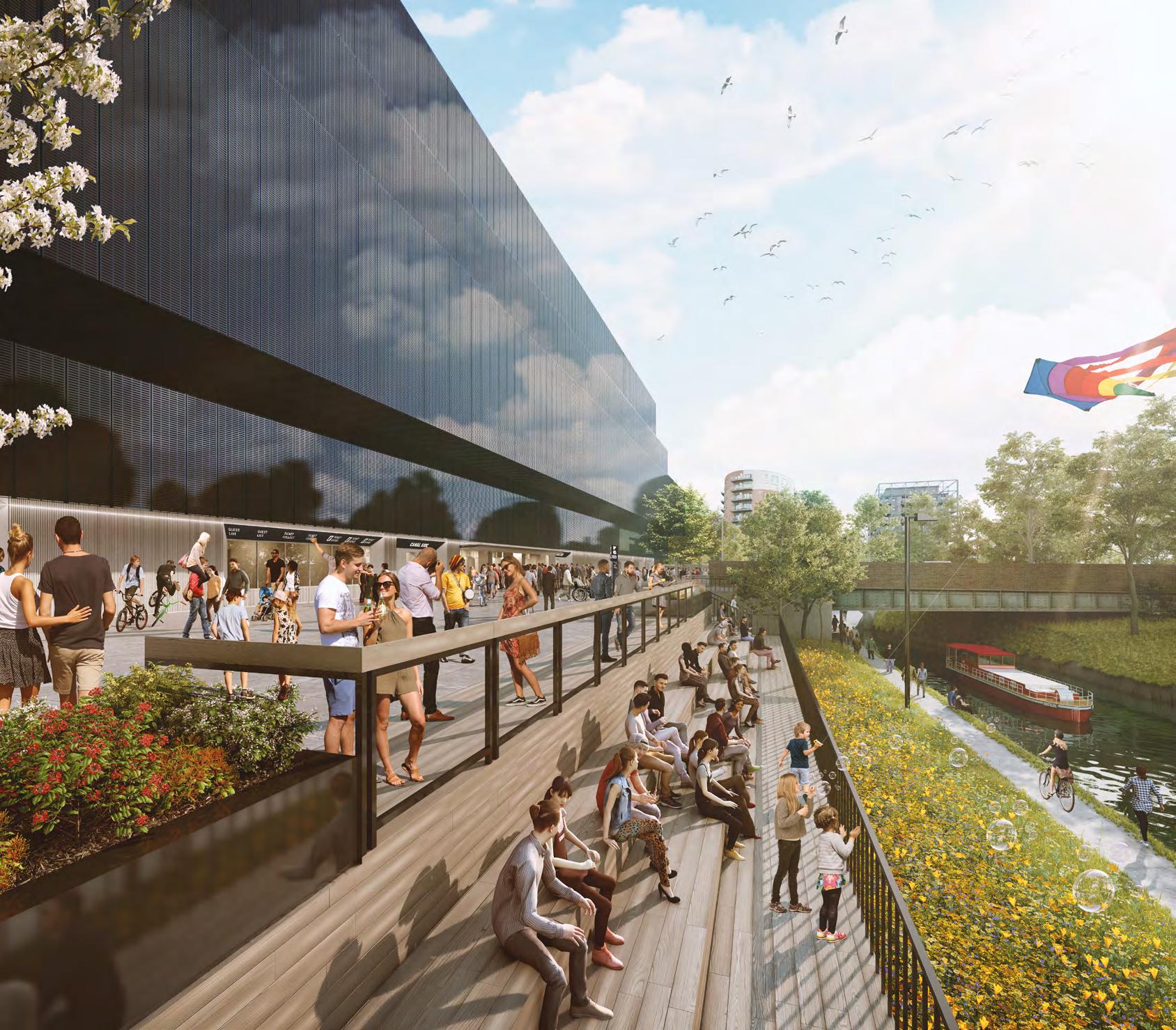
Asia is one of the hottest places at the moment when it comes to new arenas coming on stream. Multiple venues are in development in South Korea and Japan, while Thailand, Indonesia, and Hong Kong are hot on their heels in terms of new openings.
And development work in Saudi Arabia is also very active, with at least three new arenas in the offing, as the country seeks to attract more forms of entertainment for its significant young population.
Live Nation, Oak View Group (OVG), and ASM Global are at the forefront of most of these huge projects, some of which are funded by governments or major developers as part of significant regeneration and redevelopment projects.

And, while construction costs are going through the roof, and inflation is proving stickier than anyone would like, it’s not dampening the desire to create exciting new spaces for people to watch live entertainment.
As OVG’s EVP facilities development Brian Kabatznick tells us: “We haven't lost our enthusiasm for building new arenas or acquiring existing arenas, as you’ll see over the coming months, as there'll be a few more announcements from Oak View Group that shows our continued momentum.”
Some artists have opted to do shows in stadiums rather The demand for big stages is not limited to arenas, and 2022 saw an 81% increase in grosses from stadium shows compared to 2019, with ticket sales up 49% (source: Pollstar). And 2023 is seeing unprecedented activity worldwide with the likes of Taylor Swift, Bruce Springsteen, Harry Styles, Ed Sheeran, Coldplay and more.
So is this new era of stadium shows affecting arenas? Kabatznick doesn’t think so. “I think [this situation] ebbs and flows. The arenas all had great years in 2022 and 2023, as did stadiums. Some of those artists that are playing stadiums now will probably do an arena tour at some point, because it's self-contained and the costs are more manageable. I don't think it's competitive. I think it's cooperative. And I think it's great for business that artists are touring, and fans are going – how wonderful is that?”
With so many new arenas in the pipeline, it puts pressure on existing venues to up their game to remain competitive. Consumers experiencing these best-in-class new spaces will have higher expectations of existing venues – something operators are acutely aware of.
That's why you'll see that many VIP products have diverse pricing and seating options. The days of one VIP box holder that's beholden to a three-year lease contract seem to be numbered as arenas recognise that small businesses or couples also want a VIP experience, for special occasions or hospitality reasons.
Food and beverage continue to evolve, especially glutenfree; vegan and vegetarian options; and locally sourced food. “Sustainability is a key for us, and organic food,” says Kabatznick. “But ultimately, it all comes down to price, product, and service. If you're able to give the customer quality and diversity of the unit at a good price, that's our goal.
“Ultimately, what does the consumer want? Great sightlines; great acoustics; great food and beverages; easy access to toilets; public transportation options.”
Turn the page for a look at some of the key venues being built around the world →
Thousands of professionals read IQ every day. Make sure you get the whole picture…
procurement, transport, and local impacts.
“As the world’s leader in live entertainment, we have a responsibility to preserve the live music experience for generations to come and a tremendous opportunity to use our platform to inspire global environmental action,” the company said.
It took greenhouse gas emissions readings from its events and venues as a baseline, with the aim of achieving a 50% reduction in these emissions by 2030.
Packed calendars, staffing levels, rising production costs, inflation, energy price increases, security… the list of challenges arenas are solving is as long as ever.
But one of the most significant issues facing all arenas is environmental sustainability. Around the world, venue companies are rolling out initiatives to reduce waste, cut power consumption, find renewable energy sources, increase efficiency, and eliminate single-use plastics.
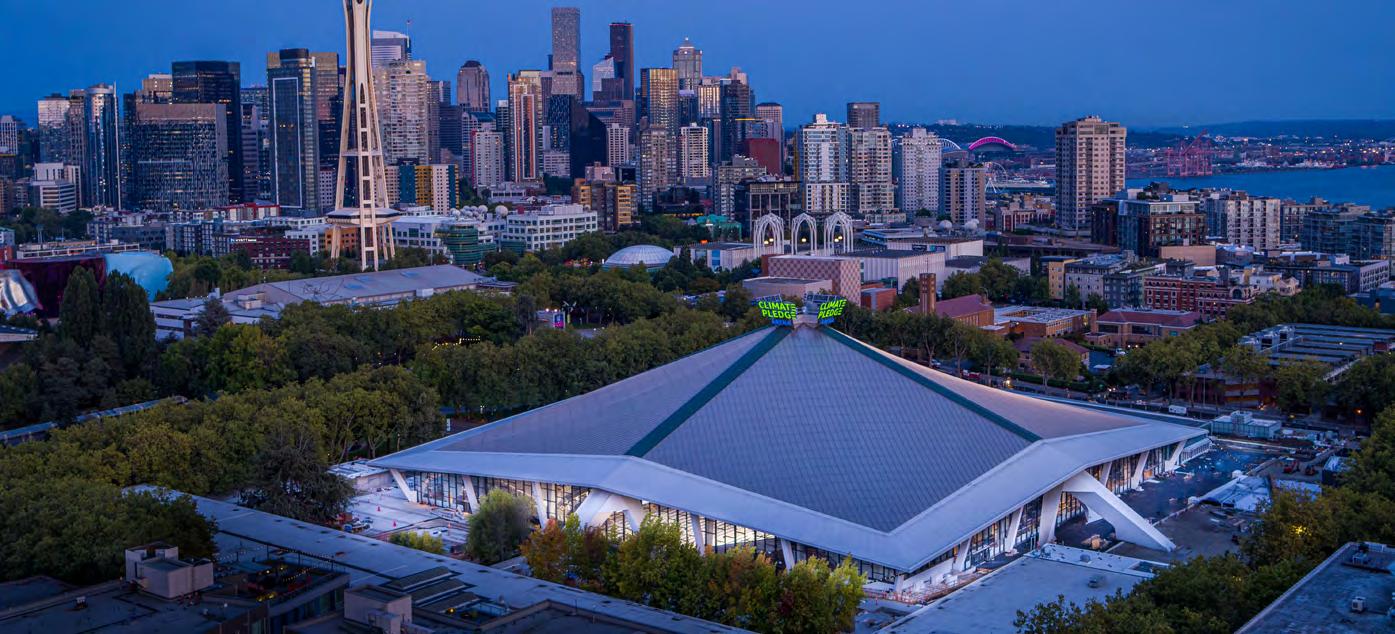
Among those leading the way is The O2 in London, which started in 2011 with a wormery to compost food waste and by 2015 was investing heavily in energy reduction projects. By 2019, the venue had reduced its Scope 1 and Scope 2 GHG emissions by nearly 80% compared to 2010. Last year, it organised Overheated at The O2, a climate festival with Billie Eilish. And in December, it became the first arena in England to achieve its Greener Arena certification.
In 2019, Live Nation announced its Environmental Sustainability Charter, committing the multinational to reducing the impact of its venues and festivals, setting out eight priority areas: emissions & energy; resource use & waste (including plastic), water, food, public engagement,
Patricia Yagüe is Live Nation’s head of sustainability EMEA. She says: “The two areas that we are focusing on are climate change and resource efficiency. Our climate change measures tackle everything to do with emissions – mostly energy and transportation; while resource efficiency is about reducing the use of waste, plastic, water, and so on.” She works across markets in the region navigating the differing regulations, cultures, systems, suppliers and implementing action plans to reach the company’s targets.
Among the challenges facing all arenas when it comes to environmental sustainability are emissions, both the energy usage at venues and for events, and the transportation of fans, supplies, and staff travel. “This can be a particularly tricky challenge because we don't have 100% control over it, we just have a big influence,” says Yagüe. “That's why we're working really hard on promoting public transportation and making deals with public transport authorities, running studies with universities to understand how we can influence the travel of the fans.” She says public transport firms are generally very receptive to Live Nation’s overtures to work together to help more people ditch the cars. For example, since 2008, the company’s Belgian venues have seen the number of people arriving by car fall from 65% to 45%.
“We’re also working out how we can power our buildings with renewable energy. Sometimes it's easy, sometimes it's not,
Arenas around the world are united by a goal to become environmentally sustainable. James Drury takes a look at some of the measures being rolled out and their successes.
The
because in some countries green energy is more expensive.”
She says the company has two very ambitious resource eficiency targets: eliminating single-use plastic at venues and festivals and working towards sending zero waste to landfill by 2030. “That's a big challenge because it's a systemic problem – waste is a big issue for the whole planet.
“Eliminating single-use plastic from our venues and festivals can present issues because when some of these venues were built, people weren’t thinking about things such as storing reusable cups or security issues around letting fans bring their own water bottles into a venue.” She says in trying to prevent the sale of water in single-use plastic bottles, the company can come up against local legislation – for example, in the USA, you can sell water in aluminium cans, but in some European countries, that’s not allowed.
The company is making strong progress towards its targets. Currently 75% of Live Nation venues in Europe, the Middle East, and Africa run on green energy, and the firm is aiming to have the final 25% on green energy by the end of 2023.
As an example of the results of measures already implemented, the company estimates it’s reduced 500 tonnes of CO2 between 2018-2022 in its Italian venues Parcolimpico in Turin (Pala Alpitour – 15,450-cap and Palavela – 12,200-cap), thanks to the installation of a geothermal heat-pump, energy efficiency investments, and retrofits. Meanwhile, the installation of solar panels at the Trixxo Arena and Antwerp Hospitality Centre in Belgium has seen the production of 100% and 50% of daily energy use respectively (excluding events).
The Parcolimpico venues also saw a 10% reduction in total waste between 2021 and 2022, thanks to a variety of initiatives, even more impressive when taking into account two major events they hosted – the Eurovision Song Contest 2022 and the Nitto ATP Finals.
A reusable cup programme introduced at the Royal Arena
in the Danish capital Copenhagen in February 2023 meant 380,000 single-use plastic cups were avoided by June.
Proudly trumpeting its flagship environmentally sustainable venue – the Climate Pledge Arena (17,200) in Seattle – venues giant Oak View Group puts sustainability at the heart of its business.

The “world’s first carbon-neutral venue” doesn’t use any fossil fuels in the arena for daily use – mechanical systems, gas combustion engines, heating, dehumidification, and cooking have all been converted to electric; solar panels combined with off-site renewable energy means it uses 100% renewable energy power; and it offsets all carbon emission activities it can’t control – like transportation. It aims to be single-use-plastic free by 2024, and rainwater collected using the roof is turned into ice for the resident ice hockey team’s rink.
OVG EVP facilities development and management Brian Kabatznick says the sustainability initiatives implemented at the Climate Pledge Arena are being rolled out across its other new builds and renovations where possible. Among them, Manchester’s forthcoming Co-op Live features 10,500 sqm (1.5 x a football pitch) of rooftop solar panels, air source heat pumps, high-spec insulation, and a façade designed to reduce cooling and heating requirements. The venue’s architecture is paired with renewable energy, low carbon technologies, and intelligent building controls such as LED lighting design and smart building systems to minimise energy use.
But OVG knows that action without measurement and accountability is meaningless, so earlier this year it launched GOAL (Green Operations and Advanced Leadership) – a data platform that enables subscribers to measure their performance against a broad set of sustainability standards specifically designed for venues. It includes a tactical roadmap for achieving the standards, a customised tracking →
Thousands of professionals read IQ every day. Make sure you get the whole picture…
Latino artists of multiple genres are exploding all around the world, and the dynamism of the music is being matched in many places by the arena market across the region. With new venues opening in the last few years and even more planned for the coming five years, confidence is sky high.
Huge exchange rate fluctuations in some countries can make the bottom line challenging when booking international artists who want to be paid in US dollars or Euros. But that’s not dampening the mood. Viva la musica!
Population: 46.6million Language: Spanish
Currency: Argentine peso (ARS) GDP per capita: $21,500
Internet users: 39million Active smartphone: 59million
Argentina is facing its worst economic crisis since the turn of the millennium when unemployment exceeded 20%, and a staggering half of the population slid below the poverty line. This time, the 100%-plus inflation of the Argentine peso has resulted in an entirely new bank note – the 2,000-peso bill –and rekindled right-wing proposals to dump the currency entirely and attempt to adopt the US dollar, which has already crept into many transactions, including those for real estate.
No great surprise, then, that the musical talent on view in Argentina is currently mostly of the local or regional kind –when the peso weakens, European- and US-derived tours become distinctly unviable. In this context, the stadium heroics of Coldplay last year – when the band sold out an unprecedented ten-night run at the 65,000-cap Estadio River Plate in Buenos Aires, snatching the ten-year-old venue record from Roger Waters – seem even more remarkable.
However, as Ignacio Taier, chief operating officer of Cordoba-based promoter and venue owner Grupo Q points out, on the day Taylor Swift announced two River Plate shows on the Eras Tour , “with inflation like this, people know there is no point
saving, so they spend their money on having a good time.”
In fact, the shows were so successful that the government of Argentina applied new taxes on concerts by acts who charge in foreign currency – an additional 30% on tickets, a levy described as the “Coldplay dollar” by local media.
At the Movistar Arena Buenos Aires, this year’s sights are strikingly local: veteran Argentinian acts such as Babasónicos, Catupecu Machu, Las Pastillas del Abuelo, La Beriso, and Los Nocheros pack the calendar, along with regional legends including Brazil’s Caetano Veloso and Mexican superstar Luis Miguel, who plays an impressive ten nights in August. Later in the year, though, acts from further afield such as Måneksin, Gojira, and Mastodon are coming, with Laura Pausini due next February.
Setting aside Argentina’s woes, the Movistar is the multipurpose arena Buenos Aires has waited years for. Operated by ASM Global, it holds 15,000 and forms an increasingly vibrant network that also encompasses modern venues in Uruguay, Colombia, Chile, and Brazil, where Live Nation/Oak View Group/GL Events’ São Paulo Arena will complete the set.
In the second city of Cordoba, Grupo Q this year put a roof on its Quality Arena to create an 8,000-capacity indoor venue (or 4,200 seated). Combined with its 1,500/3,500-cap Quality Espacio venue and 300/400-cap Quality Teatro, the complex represents, in Taier’s words, “the largest and most versatile events centre in our region.”
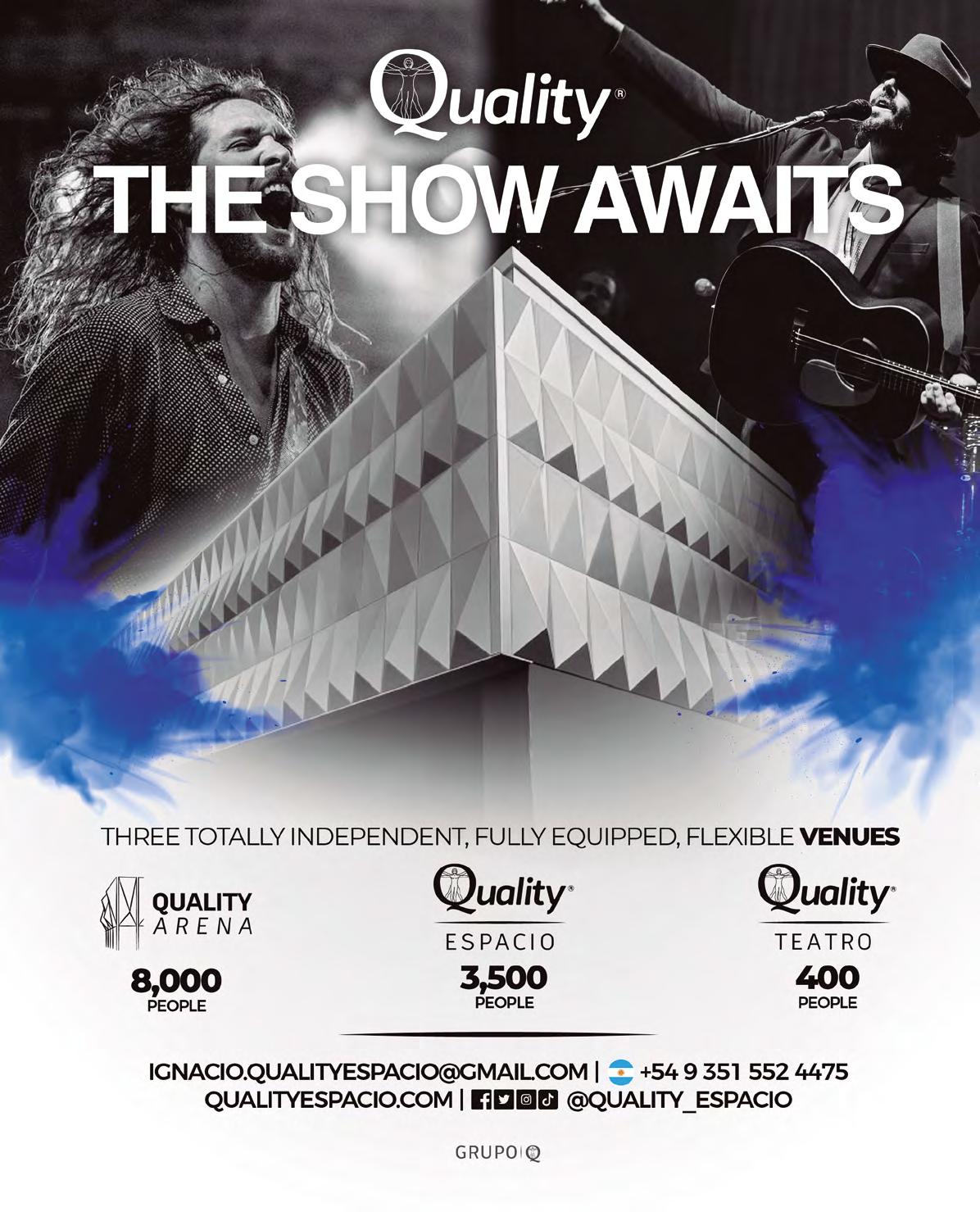
Taier acknowledges that this year isn’t an easy one in Argentina. But, as Argentinian live operators are entitled to do, he points out that they are used to operating in such conditions. “Since we have three venues and we are also promoters, here and in other people’s venues, we are in a better position to go forward, even when things are difficult. We have 62 events right now for this year, and I would say that ten to 15 of them at least are international events. That’s a good number, especially talking about Cordoba, which is not Buenos Aires.”
Nonetheless, local stars are making hay. La Beriso and fellow Argentinian boyband CNCO, as well as Uruguayan stars Jorge Drexler and El Cuarteto de Nos, are among those playing the new arena this year. The Quality complex is also a rare venue that offers its own hotel on site, with 13 apartments for visiting touring parties.
In the same city, the 21-year-old Orfeo Superdomo, with its capacity of up to 14,000, staged numerous high-profile shows over the years, including Guns N’ Roses, Metallica, and Michael Bublé, but it is now closed, having never returned after the pandemic. Its owner is reported to have applied for its demolition.
Other venues in Buenos Aires include the 91-year-old, 8,400-capacity, art-deco Estadio Luna Park in the downtown San Nicolás neighbourhood near the waterfront. Part of Argentina’s history – and the very place where Eva ‘Evita’
Thousands of professionals read IQ every day. Make sure you get the whole picture…
international act to play there (in January 2020) before Covid restrictions were imposed by the government. Bon Jovi performed there in 2018, and the same year saw BTS play three nights there. Justin Bieber played there in November 2022.
The Aichi Prefectural Gymnasium in Nagoya opened in 1964 – a major year for arenas opening in the country (see above) – and has a capacity of 7,515. Acts such as Sarah Brightman, Boston, and KISS have played there in the past decade, while Il Divo played there in March this year, making them one of the first international acts to play in Japan as the country slowly started to open up in the wake of the pandemic.
Population: 33.9million Languages: Malaysian, English, Mandarin
Currency: Malaysian ringgit (MYR) GDP per capita: $26,400
Internet users: 29.1million Active smartphones: 43.7million
The leading venue for international artists of this level is the 13,800-capacity Axiata Arena in the capital, Kuala Lumpur. With 2,000 seats and five VIP suites, it can offer production such as centre-hung and ribbon LEDs, audio, Wi-Fi, and more.

Owned by the government, it underwent a major refurbishment in 2017, following a ten-year naming rights deal with telecoms giant Axiata, which saw it rebrand from Putra Indoor Stadium. Upgrades included new seating, a new foyer, and the opening of VIP suites.
Past acts include Shawn Mendes, EXO, and Adam Danial. The venue is part of the KL Sports City Complex, which also includes the 85,000-capacity Bukit Jalil National Stadium, which was due to host Justin Bieber in October 2022, and smaller sports venues.
Population: 114million Languages: Filipino, English
Currency: Philippine peso (PHP) GDP per capita: $8,000
Internet users: 54.8million Active Smartphones: 149million
Live Nation recently announced its acquisition of leading Filipino promoter Music Management International (MMI), which has brought the likes of Coldplay, U2, Shawn Mendes, Blackpink, The Chainsmokers, Maroon 5, OneDirection, The Weeknd, Justin Bieber, Bruno Mars, and Backstreet Boys to the country in recent years.
Many of these acts perform at the striking-looking SM Mall of Asia Arena in Pasay City, just south of Manila, which has long been a popular stop on international tours. With an eye-shaped exterior, it is one of the largest arenas in the region and can be configured for between 4,000 and 20,000 people.
It has plug-and-play fibre-optic cabling for camera points and an outside broadcast van set-up that can enable livestreaming of shows.
Acts include The Script, LANY, All Time Low, and Billie Eilish.
When it opened in 1960, Smart Araneta Coliseum in the Quezon metropolitan district of Manila was the largest covered coliseum in the world. Today, it’s part of a bustling entertainment district and can be configured for up to 15,657 people in the round, depending on stage size.
At the time of writing, Westlife and Avril Lavigne were due to perform.
Population: 5.9million Languages: English, Mandarin, Malay, Tamil Currency: Singapore dollar (SGD) GDP per capita: $93,400 Internet users: 5.2million Active smartphones: 9million
Singapore is frequently the Asian base for many global arena firms – ASM Global established a new office in the city state in 2021, and promoter CTS Eventim opened its Eventim Live Asia office there the same year, joining established presences by others such as AEG.
The leading venue complex in this Asian economic powerhouse is Singapore Sports Hub – made up of the 55,000-capacity Singapore National Stadium and longstanding stalwart venue Singapore Indoor Stadium. Built in 1989, the pillarless, air-conditioned venue can be configured for between 4,000 and 12,000 people.
Damian Bush, managing director – venue operations says: “Market forces and pent-up demand for live events, which built up during the pandemic, are driving the return of in-person events.
“We have received strong interest from organisers and have had to do some juggling to find dates for some acts as our calendar is fast filling with sports and entertainment events beyond 2022 across all our venues.
“Consumer demand is equally strong. Tickets for events at the Singapore Sports Hub are being snapped up, whether it’s for sports such as UFC 275, Dota 2 The International or concerts by The Script, Lany, K-pop groups such as Seventeen, Super Junior or Asian artistes like Eric Chou.”
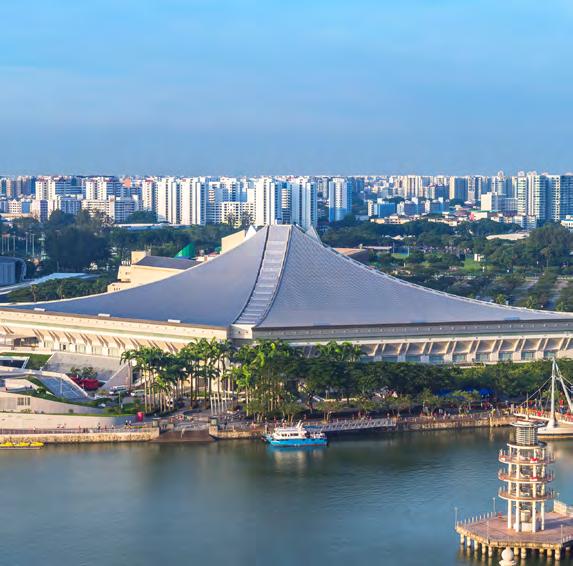
He says new and returning live acts are drawing even bigger crowds than in pre-pandemic times. “More bands are touring, and acts that typically fill, for example, a 10,000 seat arena, are looking for larger venues to support double the attendees.”
Singapore Indoor Stadium
To get involved in future editions of the Global Arena Guide, contact Tom Brint: tom@iq-mag.net

We operate the most visited and versatile venues in the Nordics! At Avicii Arena, Friends Arena, Tele2 Arena, Södra Teatern, Annexet and Hovet we host more than 650 events per year. We know how important the smallest details are to create a perfect live event.
Scan to learn more about us and what we can help you with:

We’re future proofing our iconic, award winning Manchester venue for the next generation of fans and artists.

• Increased capacity
• Elevated back of house including new green rooms, VIP lounges and dressing rooms
• New concourse and bars featuring state of the art tech
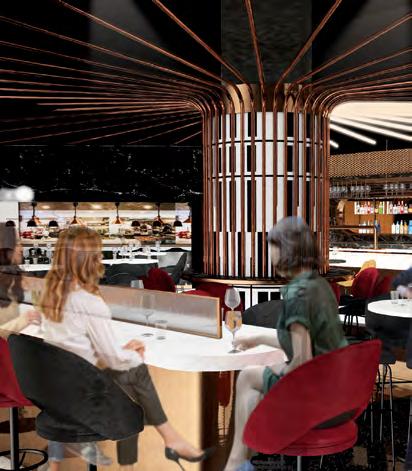
• Dedicated VIP entrance and reception now open
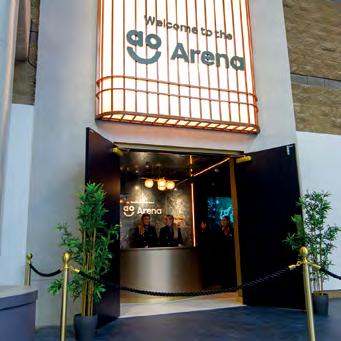
• The Mezz members only Bar and Restaurant
• The Beautiful North and AO Electric Lounge upgraded suites